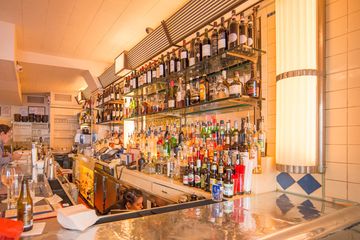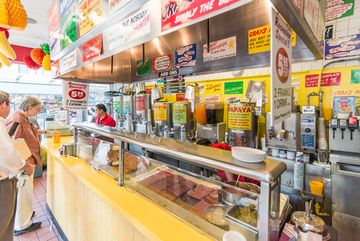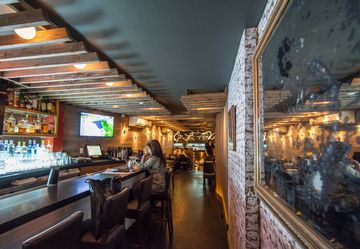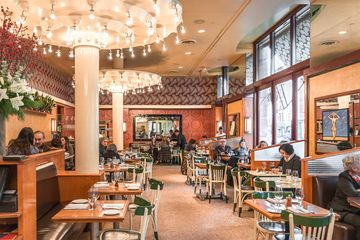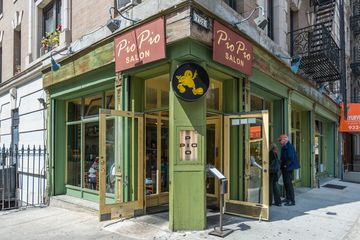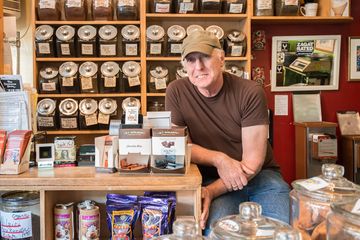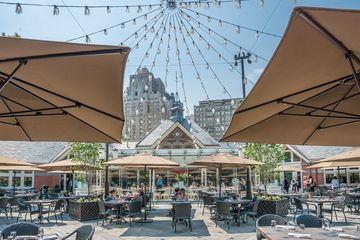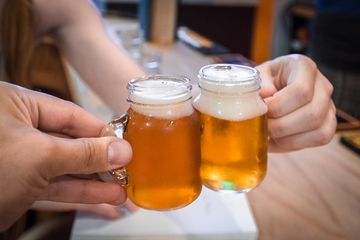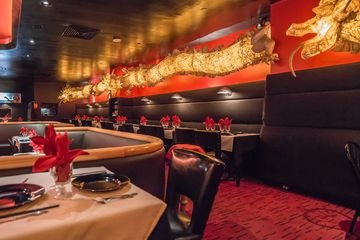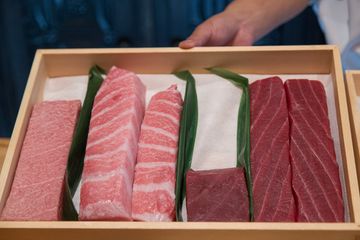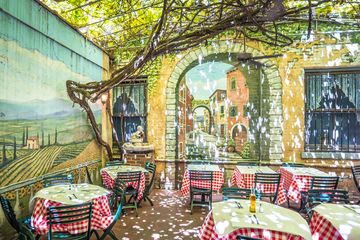Yoko Hasegawa, the owner of this Upper West Side sushi bar, went to a temple in Japan to discover the best name for her new restaurant in Manhattan. She came back with Kaito, which means "Sea Breeze. "When I visited the twelve-seat restaurant shortly after it opened in the summer of 2017, Jorge Dionicio, one of the talented members of the team at Sushi Kaito, told me that he began making sushi in Peru. He explained to me that there is a large Japanese population in his country. "Everything started there for me a long time ago, " he said. He went to school for electrical engineering and worked at a sushi bar while attending university. "The more I know, I know nothing, " he admitted. After spending several years in New York, working at different restaurants, he realized that he needed to spend time in Japan to learn the "real" technique. In 2009, he spent one year there "to be trained, " but he continues to go back to learn more and more as often as possible. Part of the schooling, he admitted with a chuckle, is to eat in as many sushi bars as possible. Although he has been making sushi for fifteen years, Jorge has no desire to work in any other type of cuisine. Jorge chose to come to Kaito because he appreciated the philosophy of engaging with the customers and developing personal relationships with people. When I inquired whether or not the restaurant already had returning diners, Jorge enthusiastically replied, "Oh yeah - over and over. "Jorge was proud to tell me that on the evening after the first little, local write up on the restaurant was published, sixty-two people stood outside, hoping to get in. Unfortunately, there were not enough seats, and the employees had to turn dozens of people away. In a small, intimate setting that is decorated simply, so as not to take away from what is going on behind the counter, guests can pull up a chair, engage in conversation with the staff who are preparing the sushi, and savor the fresh fish that arrives on a daily basis straight from Japan. When I asked Jorge what makes the place special, he quickly responded, "Everything we do, we do with our heart, " all from scratch. "We pick our own ginger, make our own soy sauce and put an emphasis on purity. " He added that the restaurant aims for perfection. "Maybe we never get it but we are always looking for it. " He said that the employees enjoy making the people smile and giving them a memorable meal. "It's not just about food, it is a life experience. " Jorge believes that Sushi Kaito is different from other sushi bars - "We enjoy speaking with guests, answering their questions. " While the atmosphere does not feel overly serious, he emphasized, "We are, though, very serious about our product. " He continued, "Here, we are very different. We take care of everything. " The other men preparing the food side by side with Jorge all nodded in agreement. "Although it is a lot of work, it never feels like work, " one of them explained. Jorge told us, "I leave at midnight, go home, take a shower, climb into bed, and wake up eager to do it all over again the next day. I love what I do, so I never mind. "

